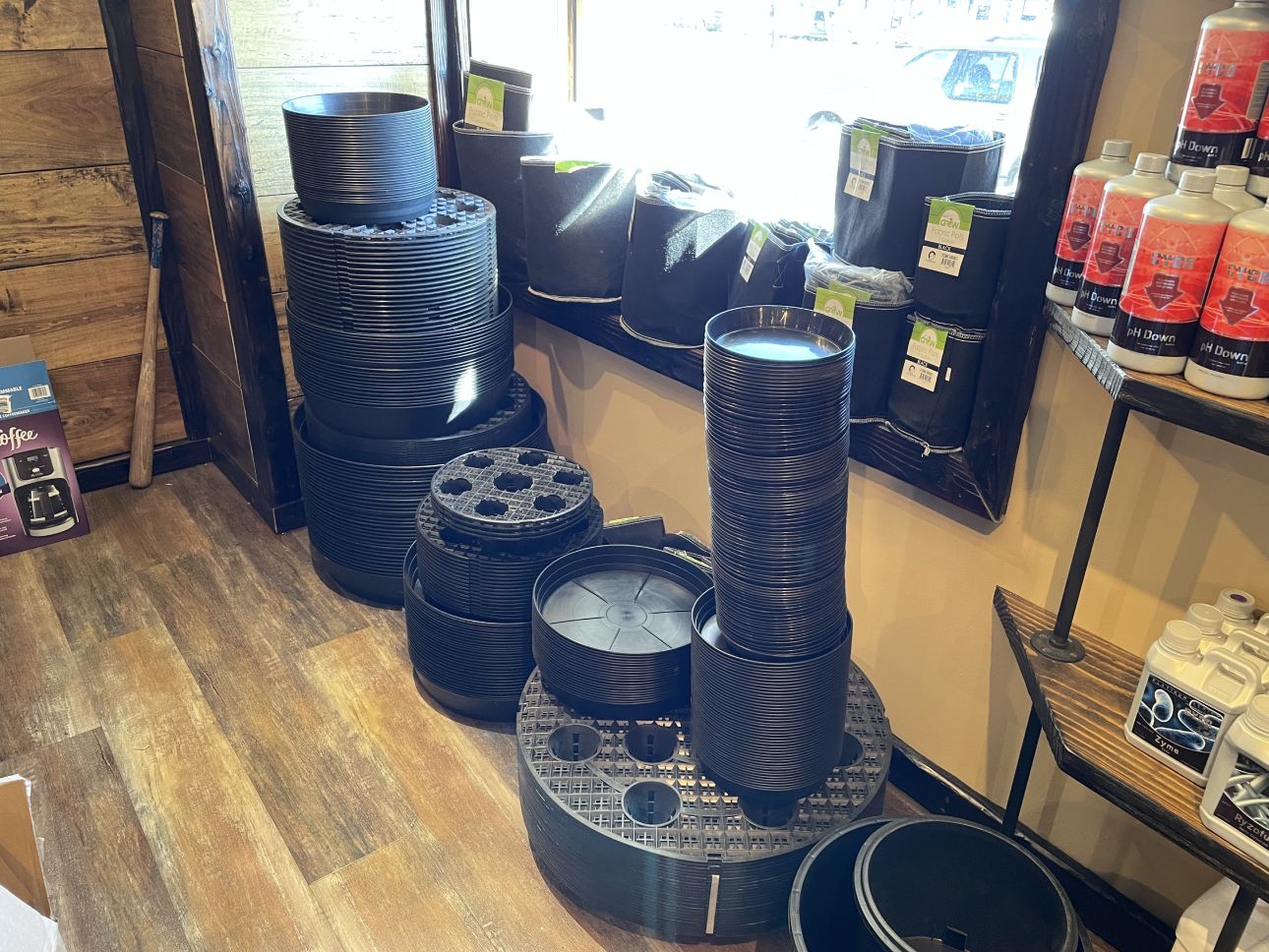Taking Advantage Of the Power of Hydroponics: a Deep Dive Into Makes Use Of and Different Types
In the realm of contemporary agriculture, hydroponics has arised as a technique that tests traditional farming practices by providing a water-efficient and space-saving option. The utilization of hydroponic systems opens a globe of opportunities for cultivating plants in varied settings, eventually impacting food manufacturing and sustainability. As we navigate through the intricate landscape of hydroponics, exploring its various kinds and applications, a much deeper understanding of its potential to transform farming practices and address global food safety and security issues begins to unravel.
Advantages of Hydroponic Farming
Hydroponic farming supplies countless advantages over traditional soil-based farming. One of the main advantages is water effectiveness; hydroponic systems use up to 90% much less water compared to conventional farming approaches.
Furthermore, hydroponic farming allows for higher control over nutrient degrees, bring about faster plant development and higher returns. By offering important nutrients straight to the plant roots, hydroponic systems advertise healthier and extra durable plant development. In addition, the controlled setting of hydroponic systems minimizes the threat of insects and diseases, reducing the requirement for damaging chemicals and herbicides.

Common Kinds of Hydroponic Solutions
One prevalent type is the Deep Water Society (DWC) system, where plant origins are immersed in a nutrient remedy. The Ebb and Circulation system, additionally known as Flooding and Drain, periodically floods the plant roots with nutrient service prior to draining it. Wick systems, the most basic form of hydroponics, utilize a wick to passively provide vitamins and mineral service to the plant roots.
Nutrient Movie Method (NFT) System

One of the vital benefits of the NFT system is its water performance. The Indoor Earthworm. Considering that view it the nutrient option is recirculated in a shut system, this method makes use of substantially less water compared to standard dirt farming. Furthermore, the NFT system is space-efficient, making it perfect for interior farming or in locations with limited space for standard farming
However, the NFT system needs mindful monitoring and maintenance to guarantee the continuous flow of water and nutrients. Any type of disruption in the circulation can quickly affect plant health and wellness. Overall, the NFT system provides a reliable and sustainable way to grow plants hydroponically, specifically for plants that thrive in well-oxygenated root atmospheres.
Deep Water Society (DWC) System
Relocating from the Nutrient Movie Strategy (NFT) system, the Deep Water Society (DWC) system is a hydroponic method that involves suspending plant roots directly in a nutrient remedy. Unlike NFT, where roots are continuously exposed to a thin movie of nutrient remedy, DWC plants have their origins submerged in a reservoir loaded with aerated nutrition water. The roots dangle in the nutrient remedy, enabling direct uptake of water and crucial nutrients.
One of the key advantages of the DWC system is its simpleness and reduced maintenance requirements. The constant accessibility to oxygen and nutrients advertises quick growth and higher yields. However, DWC systems call for appropriate aeration to stop root rot and make certain optimum nutrient absorption. Routine tracking of pH levels and nutrient focus is critical to protect against discrepancies that could damage plant health.
Aeroponic System
A cutting-edge method in hydroponics growing, the Aeroponic System makes use of a misting or fogging system to provide nutrients straight to plant roots suspended in the air. This system is understood for its capability to advertise quick development and reliable nutrient uptake due to the direct delivery of nutrients to the origins, permitting the plant to concentrate its power on growth rather than browsing for nutrients.
Among the essential benefits of aeroponics is its water effectiveness, as the system makes use of considerably find this less water contrasted to typical soil-based farming approaches. Additionally, the exact distribution of nutrients straight to the origins can cause greater returns and faster growth prices. While aeroponics can be a lot more complicated to establish up and preserve contrasted to other hydroponic systems, its capacity for enhanced plant growth and efficiency makes it a popular choice for commercial growers and hydroponic fanatics looking for optimum outcomes.
Final Thought
Finally, hydroponic farming provides various benefits and different types of systems to pick from. The Nutrient Film Strategy (NFT) system, Deep Water Culture (DWC) system, and Aeroponic system are among the most usual approaches utilized in hydroponics. Each system has its own advantages and restrictions, making it necessary for farmers to carefully consider their demands and choices before picking one of the most appropriate system for their crops.
Unlike other hydroponic systems where plants are submerged in a nutrient remedy, in the NFT system, the origins are exposed to the water just in a superficial film.Moving from the Nutrient Film Technique (NFT) system, the Deep Water Society (DWC) system is a hydroponic technique that involves putting on hold plant roots directly in a nutrient remedy.An ingenious method in hydroponics farming, the Aeroponic System uses a misting or fogging system to supply nutrients directly to plant origins suspended in the air. The Nutrient Movie Method (NFT) system, Deep Water Society (DWC) system, and Aeroponic system are among the most common approaches utilized in hydroponics. Each system has its very own advantages and constraints, making it crucial for farmers to very carefully consider their check my site demands and choices prior to selecting the most appropriate system for their plants.